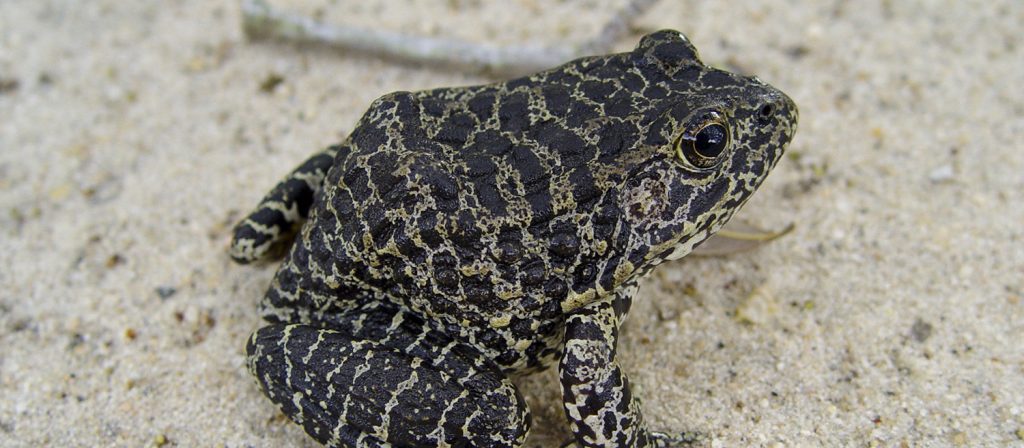Natural Resources Research & Management
Natural Resources Research & Management
Welcome to the first edition of The Jones Center at Ichauway’s e-newsletter. Many of you were probably on the mailing list for “Ecotones,” our printed newsletter from years past. We look forward to sharing highlights of our work in this new format!
Wild pigs cause approximately 150 million dollars of damage annually to agriculture and forestry operations in Georgia and they are well established in the state and throughout the Southeast. Unfortunately, wild pig populations are expanding globally. Wild pigs have an amazing reproductive capacity: sows start breeding at a young age, breed often, and have large litters. These characteristics lend themselves to rapid population growth. In the absence of population control measures, areas with just a few pigs are sure to have many pigs in a short period of time. Wild pigs are one of the world’s top 100 worst invasive species.
The Jones Center is one of many partners collaborating on an NRCS-funded grant to the Flint River Soil and Water Conservation District to evaluate wild pig control efforts as implemented by USDA APHIS Wildlife Services. The Wildlife and Aquatic Labs at the Jones Center are working with Dr. Mike Mengak at the University of Georgia (UGA) to study the effectiveness of wild pig control methods and to quantify benefits of wild pig control on native wildlife and their habitats, water quality, and agricultural production. Drs. Mengak and Mike Conner of the Jones Center are co-advising MS student Justine Smith on this project. Jones Center and UGA scientists are also working closely with investigators at Tall Timbers on a similar project. Our plan is to use comparable sampling protocols on both sites so that we are better able to generalize results of pig control throughout the region. We will also be leading education and outreach efforts with landowners in the area to teach best practices for effective long-term control.
Due to issues associated with the COVID-19 pandemic, we were unable to start sampling as scheduled. As soon as the state allowed, Justine hit the ground running. She has all of her sampling gear in place with nearly 120 trail cameras deployed. Our plan is to check these cameras and download images at least monthly. Her project will be data-rich as her first month’s camera check yielded approximately ten thousand images! These images will be used to document wild pig decline as a result of the control efforts implemented. Trail camera sampling will take place continuously during the three-year project and will allow us to determine if pig control efforts have a positive impact on other species of wildlife.
Our Aquatic Biology Lab is sampling water to monitor regional water quality and maintain the database that goes back to 1993. Led by Steve Golladay and Chelsea Smith, this group has added additional samples on private land undergoing wild pig control, analyzing them for nitrogen, phosphorus, and suspended sediment concentration to help evaluate control efforts. We are also collecting additional samples, and transferring them to the UGA Veterinary Science Lab in Tifton to see if feral swine DNA can be detected and provide a useful specific indicator of feral swine population control. We are working on methods for continuously monitoring water quality that would provide detailed resolution of potential wild pig activity in and around streams of the study area.
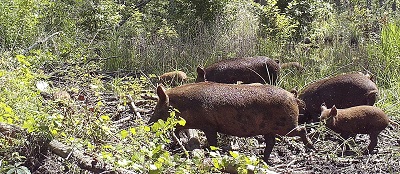
Two years removed from Hurricane Michael, things are returning to normal for the red-cockaded woodpeckers (RCW) of Ichauway. In fact, the birds are better than ever. We saw damage to 60 RCW cavity trees, or a loss of 25% of cavities, in the wake of the hurricane. We quickly mitigated these effects by installing more than 30 artificial inserts in prioritized clusters. The breeding season following the hurricane (spring 2019), despite the scale of damage across the property, was a huge success due to the hard work of our staff and partners. Active RCW clusters increased from the previous season (38 to 40) and sustained our expected annual population growth. Potential breeding groups (PBGs) saw a slight decrease as the number of single bird groups (SBGs) increased. The decrease in PBGs was assumed to be a result of the storm “mixing up” birds across the landscape and altering some clusters’ social dynamics, as opposed to direct mortality of RCWs. Nevertheless, the Jones Center fledged 47 nestlings in 2019 – the highest annual number of fledglings to date.
Between the spring of 2019 and 2020, we installed an additional 21 artificial cavities, while the RCWs accelerated natural cavity excavation. Since Hurricane Michael, we discovered 9 natural-cavities and 10 natural-starts within active clusters. The accelerated development of natural starts was likely due to multiple factors: increased birds per cluster and overall population, advanced forest age, and cavity age and availability. The 2020 breeding season maintained successful trends for RCWs. Active clusters remained the same as last year at the 5-year population goal (40 active clusters). PBGs increased by 20% from last year (31 to 38), and our SBGs have decreased to a single cluster. A total of 40 nestlings successfully fledged in 2020.
Appropriate RCW habitat south of Highway 91 is nearly saturated with installed RCW clusters. Our conservation staff is currently starting an alternative adaptive management project using conspecific playback devices, along with recruitment clusters, to target RCW dispersal and range expansion at The Jones Center. In the summer of 2020, 6 new recruitment clusters were created, and 4 inactive recruitment clusters were rehabbed, to act as experimental clusters for this project. We hope this tool will facilitate ongoing and future expansion of RCWs throughout the rest of the property.
We also saw a return to normalcy in the use of prescribed fire post-Hurricane Michael. We burned 13,278 acres in 2019, including 6,402 acres (48.2%) in the growing season. Quite the accomplishment considering we cleared hundreds of miles of roads and firebreaks, and supervised salvage logging of approximately 13,000 acres to ensure prescribed fire could be carried out safely. We were awarded a grant from the Georgia Ornithological Society (GOS) to cleanup around RCW clusters with large volumes of debris. The debris removal ensured clusters would continue being burned on their normal rotations without risk of further damage to cavity trees. In 2020 thus far, we have burned approximately 11,180 acres and should increase our total acreage before year-end.
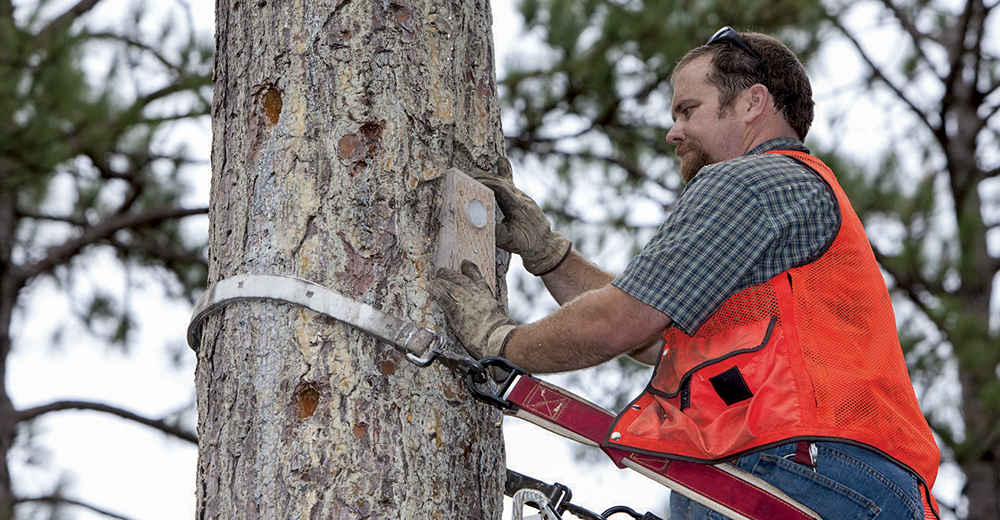
Like other natural resource and conservation organizations, the pandemic upended our education and outreach activities for the spring and summer. This is typically one of our busiest times of the year for university class visits as well as our own Maymester courses, which fall between the spring and summer semesters. We were very excited about a new field-based summer program developed in collaboration with the Southeastern section of The Wildlife Society that was scheduled for June. Unfortunately, we were forced to cancel all of these activities due to COVID-19. So, as have many others in similar positions, we’ve pivoted to take advantage of the opportunities that our digitally connected world offers for information transfer.
For many years, Jones Center Prescribed Fire Management Specialist Mark Melvin has provided steady leadership for the Georgia Prescribed Fire Council (GA PFC) through his role as permanent Vice-Chair. The momentum behind prescribed fire, and the GA PFC, has grown sufficiently that the Council’s annual fall meeting has been supplemented for the last couple of years by a North Georgia meeting in early summer. This year’s North Georgia meeting was scheduled for early June and registration was strong, so we worked with our partners on the GA PFC to turn this into a virtual event. We ended up with 454 people registered for the meeting, and in addition to folks from the Georgia prescribed fire community, we attracted participants from over 30 states! Reviews were very positive and because of the success of this event, GA PFC decided to use this format for the upcoming fall meeting on September 30th. Learn more about the fall meeting and register here. Special thanks to all the partners on the GA PFC steering committee for their contributions to make these events successful, and particularly the Georgia Wildlife Federation for their technical support.
Shortly after the pandemic shutdown, we began using a webinar platform to present seminars for, and maintain active communications with, both internal and external audiences. Internal webinars have included seminars from Jones Center scientists on their recent work, exit seminars for matriculating graduate students, and even a virtual poster session for current graduate students. Our external-facing webinar series includes seminars for both natural resource professionals and the interested public. Dr. Steven Brantley presented a public seminar on the role of forests in the water cycle. Dr. Jeffery Cannon presented a seminar on his new watershed assessment project for both leadership of the Natural Resource Conservation Service and the public. Kevin McIntyre gave a presentation on ecological forestry in longleaf pine for the U.S. Fish and Wildlife Service as part of a webinar series coordinated by the National Conservation Training Center. Be sure to tune in for our next public webinar on October 29th, by Jones Center herpetologist Dr. Lora Smith.
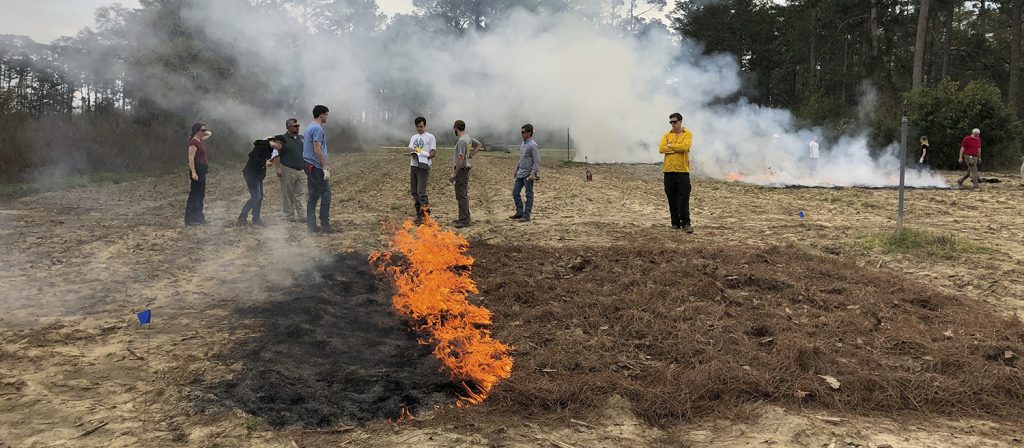
Since 2008, the Ichauway community of employees and students has gathered for a home-grown, casual 5K event in the “dog days” of summer. We always serve fresh watermelon. Sometimes we have race t-shirts. Winners always win pies (and they almost always share). This year, we’re going virtual and we’re expanding! Anyone can participate from anywhere with any kind of physical activity that motivates and challenges them. The proceeds from registration and t-shirt sales goes to local charities. This year all proceeds are going the United Way of Southwest Georgia to support families in the region affected by the COVID-19 pandemic.
Since our format has changed and broadened the opportunities for participation, our prize categories have also changed to allow more winners. A gift certificate for a personal-sized pie and a handmade ceramic medal will be awarded to the winner in each of the following categories:
You still have a couple days to participate in the Virtual Ichauway Dog Days! We appreciate your support of a good cause for our community.
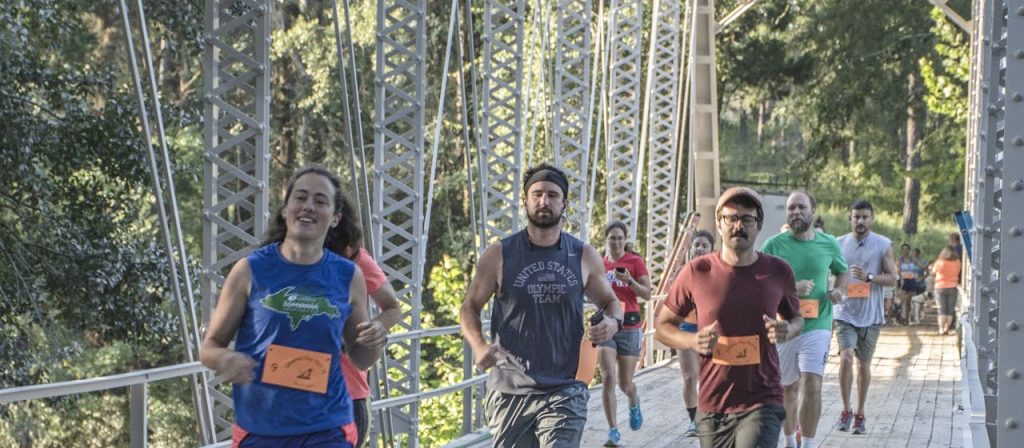
One of the most rewarding aspects of our work here at the Jones Center is the cadre of over 135 graduate students who have earned advanced degrees through our cooperative agreements with several regional universities. We’ll be highlighting some of these remarkable young people in our newsletters so you can get to know them yourselves.
Christine Fallon is currently pursuing her M.S. degree from the Odum School of Ecology at the University of Georgia under the direction of Dr. Krista Capps (UGA), Dr. Mary Freeman (USGS/UGA) and Dr. Steve Golladay (Jones Center). After completing her B.S. degree from Bridgewater State University in Massachusetts, Christine went on to gain extensive field experience as a technician with the U.S. Fish and Wildlife Service (USFWS) at National Wildlife Refuges in Massachusetts, Rhode Island, and Georgia. Her M.S. project focused on minnows and darters of Southwest Georgia and her thesis is titled “Effects of stream intermittency on leuciscid and percid food web dynamics in the Ichawaynochaway Creek Basin, SW GA, USA.”
Christine was awarded a USFWS Directorate Fellow position for the summer of 2020. This is a prestigious and competitive program that gives students experience with actual natural resource management and conservation within federal agencies. Following successful completion, student fellows earn a GS rating and credit towards federal employment. Because of COVID-19, we were able to hang on to Christine a little bit longer while she conducted her internship virtually. Christine collaborated with USFWS personnel to determine the habitat structure variables that best promote diverse waterbird assemblages at Sequoyah National Wildlife Refuge in Vian, Oklahoma. We wish Christine the best of luck as she completes her M.S program in December and moves on to a permanent position with USFWS at a location to be determined.
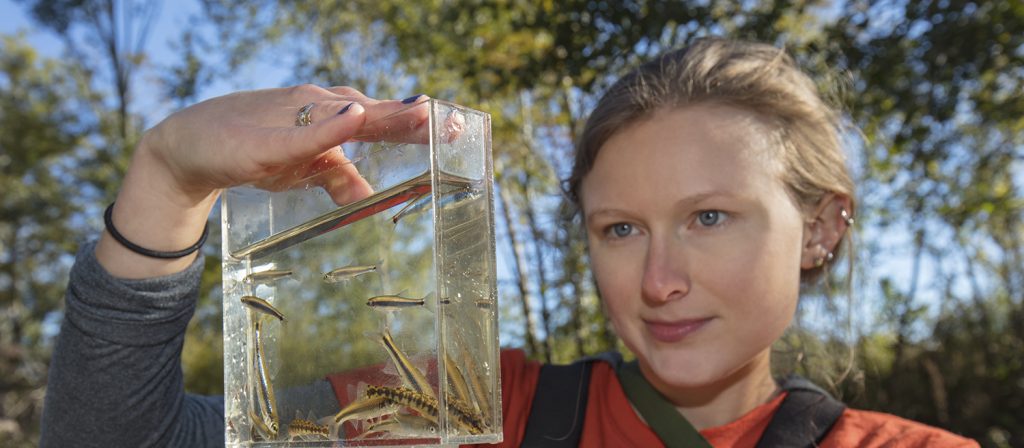
The Jones Center’s Dr. Lora Smith will be presenting a webinar, “How both short and long term wildlife research can inform management,” on November 10th on the work of our herpetology lab and wildlife program. Dr. Smith has been on staff with us since 2001 and is one of the region’s leading experts on the gopher tortoise as well as the broader community of herpetofauna in the Southeast. This will an informative presentation, so please mark your calendars and register now!
